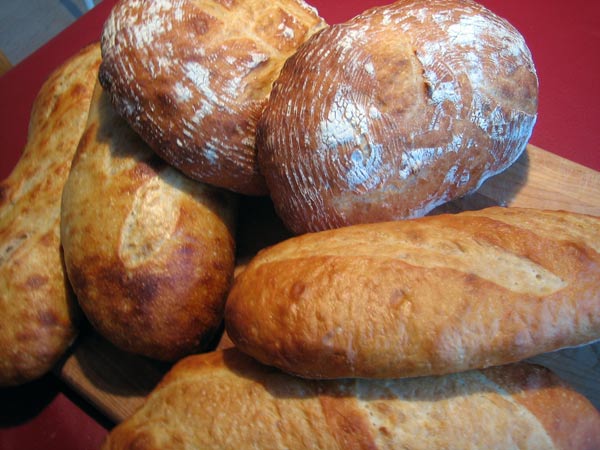What else can be said? Baking is one of those things you just have to try to learn how to do right. I don't think you can know how slack a dough you can handle, what happens if you lower the rack in the oven a couple of notches, how little yeast can you get by with, or any of these other things without just trying it. Sometimes you'll be pleasantly suprised.
And sometimes you won't: some of your loaves will come out better than others, of course. But even once you get down how to do it right, it is still fun to experiment with tweaking a few things to see how it changes the outcome. Baking is fun and extremely inexpensive, so why sweat making a few mistakes? Have fun with it, experiment, and don't get bent out of shape if a few of your loaves fail to rise. All of us have parts of our lives where mistakes are not tolerated, such as on the job. Unless you are a professional baker, when you are goofing off in the kitchen isn't be one of those times. So have a good time.

Happy baking!
If you have tips that I missed, please post them!
Comments
To celebrate, I went looking for my first post and found it here under lesson 5 ... tips. How appropriate. Sort of took the tip thing to heart and over the last five years scattered tips are all over the site. It's fun sharing and discussing. Those of you with baking stones are smart enough not to try my stone in a baking sheet/boiling water idea and realized I was kidding. Baking sheets, frying pans and stacked woks are my preference.
The end of July brings the end of the work in South Korea. The tidal power project is southwest of Seoul and already producing power from 4 turbines with high tides giving a new definition to "moonlighting." I am proud for my husband and S. Korea, this is the largest of it's kind in the world right now. Renewable energy is the way to go.
Live long and prosper, Mini
Happy anniversary and thank you for your many contributions, including some hearty laughter!
Now I'll have to look to see how close I'm getting to that milestone.
Paul
That is very cool about the tidal power project. I know we have a few tidal power pilot projects off the coast here in Oregon but I don't think there is anything in production here yet.
Congrats, and thank you, on your anniversary. Your contributions, both in substance (solid baking advice) and in defining the spirit (humorous, helpful) of the community, can't be overstated.
-Floyd
Not sure where you are located, but if you can purchase or borrow the _Artisan Bread_ video from King Arthur Flour I would highly recommend watching it. Before I received that video as a gift I was in the same position as you: I could make most pan breads, but I could not make an artisan bread on the stone. Kneading in particular was frustrating. After watching the video I have about a 90% success rate with artisan recipies and techniques.
sPh